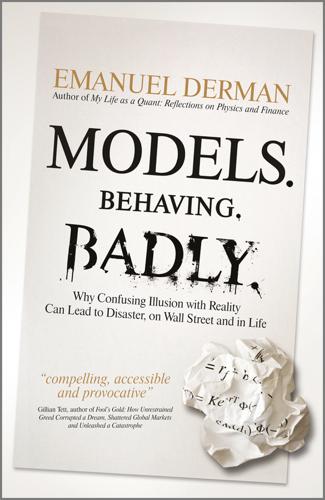
Models. Behaving. Badly.: Why Confusing Illusion With Reality Can Lead to Disaster, on Wall Street and in Life
by
Emanuel Derman
Published 13 Oct 2011
In the end you are trying to rank complex objects by projecting them onto a scale with only a few dimensions. In physics there may one day be a Theory of Everything; in finance and the social sciences, you have to work hard to have a usable model of anything. THE FINANCIAL MODELERS’ MANIFESTO On January 7, 2009, in response to the financial crisis, Paul Wilmott and I published The Financial Modelers’ Manifesto, an ethical declaration for scientists applying their skills to finance. Here is an excerpt: The Modelers’ Hippocratic Oath I will remember that I didn’t make the world, and it doesn’t satisfy my equations. Though I will use the models I or others create to boldly estimate value, I will always look over my shoulder and never forget that the model is not the world.
…
Dedication Title Page Copyright Model I Chapter 1: A Foolish Consistency MODELS THAT FAILED I: ECONOMICS THEORIES, MODELS, AND INTUITION OF TIME AND DESIRE MODELS THAT FAILED II: POLITICS MODELS THAT FAILED III: THE MOVEMENT A LOOK AHEAD TWO IMPOSSIBLE THINGS BEFORE BREAKFAST Chapter 2: Metaphors, Models, and Theories THE DIRAC SEA ANALYTIC CONTINUATION DIG WE MUST A MODEL AIRPLANE: THE ZIPPY TYPES OF MODELS THE NATURE OF MODELS THE NATURE OF THEORIES MONOCULAR DIPLOPIA MAKING THE UNCONSCIOUS CONSCIOUS AGAIN ADDENDUM: GOETHE ON SYMBOLISM Model II Chapter 3: The Absolute THE TETRAGRAMMATON THE NAME OF THE NAME OF THE NAME THE IRREDUCIBLE NONMETAPHOR A THEORY OF THE EMOTIONS FIAT MONEY LOVE AND DESPERATION HOW TO LIVE IN THE REALM OF THE PASSIONS THE FOUR QUESTIONS SPINOZA’S ANSWERS Chapter 4: The Sublime THE BIRDS OF THE AIR THE PHENOMENA: ELECTRICITY AND MAGNETISM QUALITIES: POSITIVE AND NEGATIVE QUANTITIES: COULOMB’S LAW OF FORCE BETWEEN STATIC CHARGES VOLTA’S ITALIAN INSIGHT: CHEMISTRY IS BETTER THAN FRICTION OERSTED: ELECTRIC CURRENTS BEHAVE LIKE MAGNETS AMPÈRE: A LAW FOR THE FORCE BETWEEN CURRENTS A SYMPATHETIC UNDERSTANDING FARADAY: MOVING MAGNETS CREATE ELECTRIC CURRENTS FARADAY IMAGINES FORCE-TRANSMITTING LINES MAXWELL MODELS THE LINES MAXWELL REIFIES THE LINES MAXWELL MODIFIES AMPÈRE’S EQUATIONS MAXWELL’S THEORY: THE FIELD ITSELF MAXWELL’S EQUATIONS: THE FIELD’S GEOMETRY—CURLS AND DIVERGENCES THE GREAT CONFIRMATION: LIGHT IS THE PROPAGATION OF ELECTROMAGNETIC WAVES REALITY = PERFECTION; FACT = THEORY THE BEASTS OF THE FIELD ELECTROMAGNETISM AS METAPHOR EPILOGUE Model III Chapter 5: The Inadequate FINANCE IS NOT MATHEMATICS PRICE, VALUE, UNCERTAINTY THE EFFICIENT MARKET MODEL UNCERTAINTY VERSUS RISK RISK DEMANDS A POSSIBLE REWARD A MODEL FOR RISK RISK AND RETURN THE ONE LAW OF FINANCE THE CONCLUSION: EXCESS RETURN IS PROPORTIONAL TO RISK AN ASIDE: THE PLEASURE PREMIUM THE EMM AND THE BLACK-SCHOLES MODEL THE CAPITAL ASSET PRICING MODEL THE UNBEARABLE FUTILITY OF MODELING Chapter 6: Breaking The cycle THE PERFECT CAGE THE MYSTERIES OF THE WORLD MODELS THAT FAILED WHAT IS TO BE DONE? THE FINANCIAL MODELERS’ MANIFESTO AN ETHICAL COROLLARY MARKETS AND MORALS TAT TV AM ASI Appendix Acknowledgments Notes Index About the Author ALSO BY EMANUEL DERMAN My Life as a Quant: Reflections on Physics and Finance This edition first published in 2011 Copyright © 2011 by Emanuel Derman Registered office John Wiley & Sons Ltd, The Atrium, Southern Gate, Chichester, West Sussex, PO19 8SQ, United Kingdom For details of our global editorial offices, for customer services and for information about how to apply for permission to reuse the copyright material in this book please see our website at www.wiley.com.
…
Theories can sometimes be perfect, but models are always inadequate, and financial models especially so. Chapter 6, “Breaking the Cycle,” suggests ways to cope with the shortcomings of models. To work around their inevitable flaws requires a clear understanding of their precepts; it also requires common sense and, especially, ethical principles. I have reprinted a part of The Financial Modelers’ Manifesto, developed several years ago with a colleague, which proposes a set of principles for financial analysts to live by. An Appendix, “Escaping Bondage,” provides a short diagrammatic summary of how Spinoza’s theory of the emotions leads to his philosophy for escaping the painful confines of the passions.
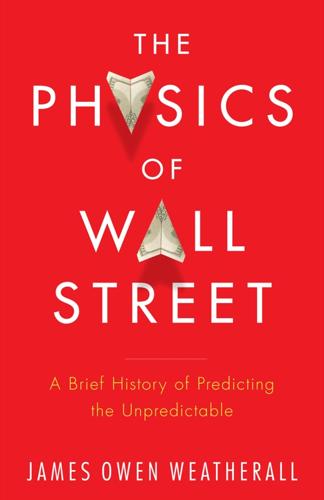
The Physics of Wall Street: A Brief History of Predicting the Unpredictable
by
James Owen Weatherall
Published 2 Jan 2013
It’s how you understand the models that counts. In early 2009, Emanuel Derman, the former physicist who worked with Fischer Black at Goldman Sachs during the eighties and nineties, teamed up with Paul Wilmott, founder of Oxford University’s program in quantitative finance, to pen the “Financial Modelers’ Manifesto.” Their point was in part to defend mathematical models as essential to thinking about finance and economics, and in part to chide “the teachers of finance” who have forgotten that no model states laws by which markets must abide. As they put it, “Models are at bottom tools for approximate thinking.”
…
The NAS report was published as Schultze and Mackie (2002). “The plan was to use this conference . . .”: For a discussion of Weinstein’s idea, with comments by Weinstein, see Brown et al. (2008). See also Weinstein (2009). Epilogue: Send Physics, Math, and Money! “. . . to pen the ‘Financial Modelers’ Manifesto’ ”: This is Derman and Wilmott (2009). “In the words of sociologist Donald MacKenzie . . .”: I am alluding to the title of MacKenzie (2006), An Engine, Not a Camera. MacKenzie’s central point here is that financial markets are shaped by the models that we use to understand them.
…
Derman, Emanuel, and Iraj Kani. 1994. “The Volatility Smile and Its Implied Tree.” Goldman Sachs Quantitative Strategies Research Note. Derman, Emanuel, and Nassim Nicholas Taleb. 2005. “The Illusions of Dynamic Replication.” Quantitative Finance (4): 323–26. Derman, Emanuel, and Paul Wilmott. 2009. “The Financial Modelers’ Manifesto.” Available at Social Science Research Network (SSRN), http://ssrn.com/abstract=1324878 or http://dx.doi.org/10.2139/ssrn.1324878. Devlin, Keith. 2008. The Unfinished Game: Pascal, Fermat, and the Seventeenth-Century Letter That Made the World Modern. New York: Basic Books. Dimand, Robert W., and Hichem Ben-El-Mechaiekh. 2006.
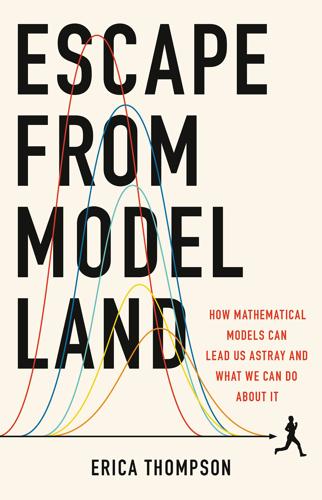
Escape From Model Land: How Mathematical Models Can Lead Us Astray and What We Can Do About It
by
Erica Thompson
Published 6 Dec 2022
I think there is a risk that the tree may not survive a hard pruning, but there is equally a risk of collapse if we allow it to continue being so unbalanced. Longer-term pruning and focused care will be needed to encourage the other branches to blossom. 7 Masters of the Universe I will remember that I didn’t make the world, and it doesn’t satisfy my equations. Emanuel Derman and Peter Wilmott, ‘The Financial Modelers’ Manifesto’ (2009) The use of models in economics, like other modelling endeavours, stems from a wish to control uncertainty about the future. Yet we remain highly uncertain, perhaps more uncertain than ever, about the outcome of modelled economic variables like stock prices or insurance losses over decision-relevant timescales: say, the next ten or twenty years.
…
.: Why Confusing Illusion with Reality Can Lead to Disaster, on Wall Street and in Life, Free Press, 2012 Frydman, Roman, and Michael Goldberg, Beyond Mechanical Markets, Princeton University Press, 2011 Haldane, Andrew, ‘The Dog and the Frisbee’, speech at Jackson Hole, Wyoming, 31 August 2012 Lowenstein, Roger, When Genius Failed: The Rise and Fall of Long Term Capital Management, Fourth Estate, 2002 MacKenzie, Donald, An Engine, Not a Camera: How Financial Models Shape Markets, MIT Press (Inside Technology Series), 2008 March, James, Lee Sproull and Michal Tamuz, ‘Learning from Samples of One or Fewer’, Organization Science, 2(1), 1991 Rebonato, Riccardo, Volatility and Correlation, John Wiley, 1999 Stiglitz, Joseph, ‘Where Modern Macroeconomics Went Wrong’, Oxford Review of Economic Policy, 34, 2018 Taleb, Nassim, The Black Swan: The Impact of the Highly Improbable, Random House, 2007 Wilmott, Paul, and David Orrell, The Money Formula: Dodgy Finance, Pseudo Science, and How Mathematicians Took Over the Markets, Wiley, 2017 ——, and Emanuel Derman, ‘The Financial Modelers’ Manifesto’, https://wilmott.com/financialmodelers-manifesto/, 2009 Chapter 8: The Atmosphere is Complicated Allen, Myles, Mustafa Babiker, Yang Chen, et al., ‘IPCC SR15: Summary for Policymakers’, in IPCC Special Report: Global Warming of 1.5C, Intergovernmental Panel on Climate Change, 2018 Anderson, Kevin, ‘Duality in Climate Science’, Nature Geoscience, 8(12), 2015 Beck, Silke, and Martin Mahony, ‘The Politics of Anticipation: The IPCC and the Negative Emissions Technologies Experience’, Global Sustainability, 1, 2018 Burke, Marshall, Solomon Hsiang and Edward Miguel, ‘Global Non-Linear Effect of Temperature on Economic Production’, Nature, 527(7577), 2015 Edwards, Paul, A Vast Machine: Computer Models, Climate Data, and the Politics of Global Warming, MIT Press, 2010 Hänsel, Martin C., Moritz A.
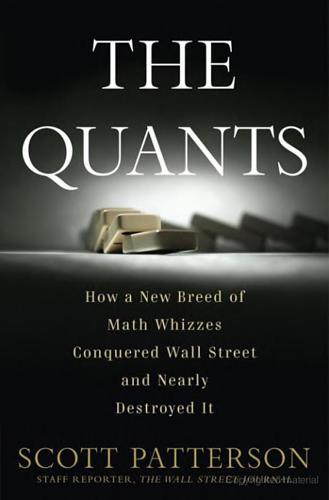
The Quants
by
Scott Patterson
Published 2 Feb 2010
Like Derman, he believed that there was still a place for well-trained, and wise, financial engineers. Together that January, they wrote “The Financial Modelers’ Manifesto.” It was a cross between a call to arms and a self-help guide, but it also amounted to something of a confession: We have met the enemy, and he is us. Bad quants were the source of the meltdown. “A spectre is haunting markets—the spectre of illiquidity, frozen credit, and the failure of financial models,” they began, ironically echoing Marx and Engels’s Communist Manifesto of 1848. What followed was a flat denunciation of the idea that quant models can approximate the Truth: Physics, because of its astonishing success at predicting the future behavior of material objects from their present state, has inspired most financial modeling.
…
a fund with ties to Nassim Taleb: Universa’s gains were first reported in “October Pain Was ‘Black Swan’ Gain,” by Scott Patterson, Wall Street Journal, November 3, 2008. 13 THE DEVIL’S WORK Paul Wilmott stood before a crowded room: The account is based on firsthand reporting and interviews with Paul Wilmott. Together that January, they wrote: The full “manifesto” can be found on Wilmott’s website, http://www.wilmott.com/blogs/eman/index.cfm/2009/1/8/The-Financial-Modelers-Manifesto. “They’re usually doing the devil’s work”: Interview with Charlie Munger. Even before the fury of the meltdown hit: The account is based on a series of interviews with Mandelbrot in his Cambridge apartment. In February 2008, Ed Thorp gazed: The account is based on a meeting with Ed Thorp in his office, and a subsequent meeting with Thorp and Bill Gross in Pimco’s office.
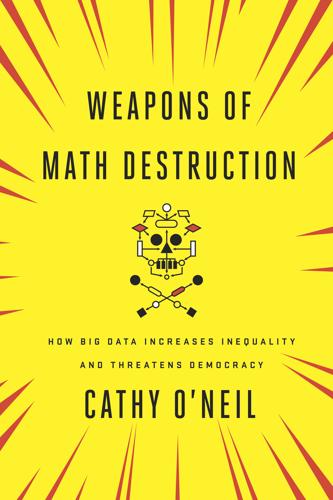
Weapons of Math Destruction: How Big Data Increases Inequality and Threatens Democracy
by
Cathy O'Neil
Published 5 Sep 2016
Apple, the most valuable company: Verne Kopytoff, “Apple: The First $700 Billion Company,” Fortune, February 10, 2015, http://fortune.com/2015/02/10/apple-the-first-700-billion-company/. In 1907 alone, 3,242 miners died: MSHA, “Coal Fatalities for 1900 Through 2014,” US Department of Labor, accessed January 9, 2016, www.msha.gov/stats/centurystats/coalstats.asp. drew up such an oath: Emanuel Derman and Paul Wilmott, “The Financial Modeler’s Manifesto,” January 7, 2009, www.uio.no/studier/emner/sv/oekonomi/ECON4135/h09/undervisningsmateriale/FinancialModelersManifesto.pdf. FindFamilyResources: FindFamilyResources website, accessed January 9, 2016, http://findfamilyresources.com/. If you plot year-to-year scores on a chart: Gary Rubinstein, “Analyzing Released NYC Value-Added Data Part 2,” Gary Rubinstein’s Blog, February 28, 2012, http://garyrubinstein.teachforus.org/2012/02/28/analyzing-released-nyc-value-added-data-part2/.